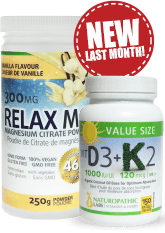Format
 Paper
Paper
Test Paper
Dosage
Dip the strip into the test solution, then instantly compare the resulting color with the matching pH color chart.
Important Information
Do not place the pH paper directly in your mouth.
- Measure your acid/alkaline balance
- Measures body PH from urine & saliva
- Scale of pH runs from 5 (acidic) to 9 (alkaline)
- Ideal for monitoring the effects of a healthy diet
Related Videos
No Related VideosArticles by a naturopathic doctor.
Micro Essential Laboratory was established in 1934, bringing you hydrion pH and sanitizer test kits. Micro Essential Laboratory, Inc. is the leading manufacturer in pH test products. Micro Essential Laboratory, Inc. Hydrion pH Paper provides excellent color separation in both the acid range (below pH 7) and the alkali range (above pH 7, offering an easy to read, single color match at every .2 to .3 interval from pH 5.5-8.0.
The concept of monitoring the body's acid/alkali balance to maintain health has been around for nearly a century. Since that discovery, a number of diets proposing the reduction of acidity, and increase of alkalinity in the body have been put forward. In general, the alkaline (ash) diet involves eating more alkaline foods such as: fresh low-sugar fruits (with an emphasis on citrus), all vegetables, root vegetables, nuts, and legumes, while at the same time avoiding acid-forming foods such as: grains, dairy, meat, sugar, alcohol, and caffeine.
Such a diet is alleged to help maintain slight alkalinity of blood without stressing the body's regulators of acid-base homeostasis. It has been theorized that these changes can lead to a vast number of health benefits including: prevention of bone loss, and allergies, while promoting weight loss and increased energy.
Acid-Base Balance in the Body: Catabolism of the Tissues
The standard North American diet is high in protein, fat, sugar and phosphorus from the consumption of meats, refined grains, junk foods, salty foods, alcohol, coffee and soft drinks, and this results in a chronic, low-grade, metabolic acidosis (an acidic state in the body). The acid-base balance (pH) of the cellular environment affects almost all of the body's metabolic processes.
In order to maintain homeostasis, the body must put in extra work to counteract the acidosis from our diets to allow healthy cellular reactions to continue. In fact, our blood pH is tightly maintained in a narrow range between 7.35 and 7.45. Since this pH balance in the blood is so important, our bodies are willing to sacrifice most other tissues to maintain it. In order to neutralize acidity in the blood, our body uses a complex chain of different acid-base balancing reactions that are often catabolic to our other tissues. One example of this requires leeching calcium out of the bones and into the bloodstream to help neutralize the acidity. Another involves breaking down available protein (often from our muscles) to release ammonia ions to provide base to neutralize the acid.
Unfortunately, increasing these levels in the blood stream result in their loss through the kidneys into the urine, further depleting the body. Helping to eliminate the acidity problem can potentially help your body maintain your bone density and your muscle mass.
The Role of Inflammation
Inflammation in the body creates an environment that is also increasingly acidic. That is a possible reason why we see bone disturbances that occur with: ageing, inflammation, fractures, tumours, anemia, kidney disease, diabetes, respiratory disease and smoking. Even beyond alkalinizing the body, in general, reducing inflammation in the body will help to increase overall health.
Acidic Foods vs Acid-Forming Foods
When considering acidity we think of foods that are directly acidic like lemons and grapefruits, but this is not their acid-base role in the body. It is not the physical acidity of the foods that matters as much as the effect they have on our bodies. It is the digestive process and what is absorbed and utilized by our body that matters. The digestion of animal proteins from meat and dairy products increases the acidity in our blood from the breakdown of sulfur-containing amino acids. A vegetarian diet has been clinically shown to promote alkaline outcomes in the body when compared with a non-vegetarian diet. The digestion of grains is also acid-forming in the body. It should be noted that increasing your fruit and vegetable intake can over-ride most of the deleterious effects from eating animal and grain products, so a strictly vegetarian diet is not necessary. It helps if you consider the problem to be insufficient alkaline instead of excess acid. So long as sufficient fruits and vegetable servings are consumed, their alkalinity will counteract a reasonable amount of acid-forming foods ingested.
How to Test Your Acid-Base Balance
The pH scale runs from zero to 14, with zero being full acid and 14 being fully alkaline. A pH of 7 is neutral, and is the pH of good quality water. It is relatively easy to test your own pH at home. There are widely available commercial pH strips or rolls that you can purchase online or from your local drug or health food store. You can tear off one strip and use it to test your first morning saliva or your second morning urine using the comparative chart it comes with. Trying to get your pH to be closer to neutral (between 6.2 and 7.4) is generally the goal, although exact aims may vary depending on any underlying health conditions or concerns you may have. If you are unsure of what your level should be, please consult your healthcare provider for more
- Reviews
- POST A NEW REVIEW





















